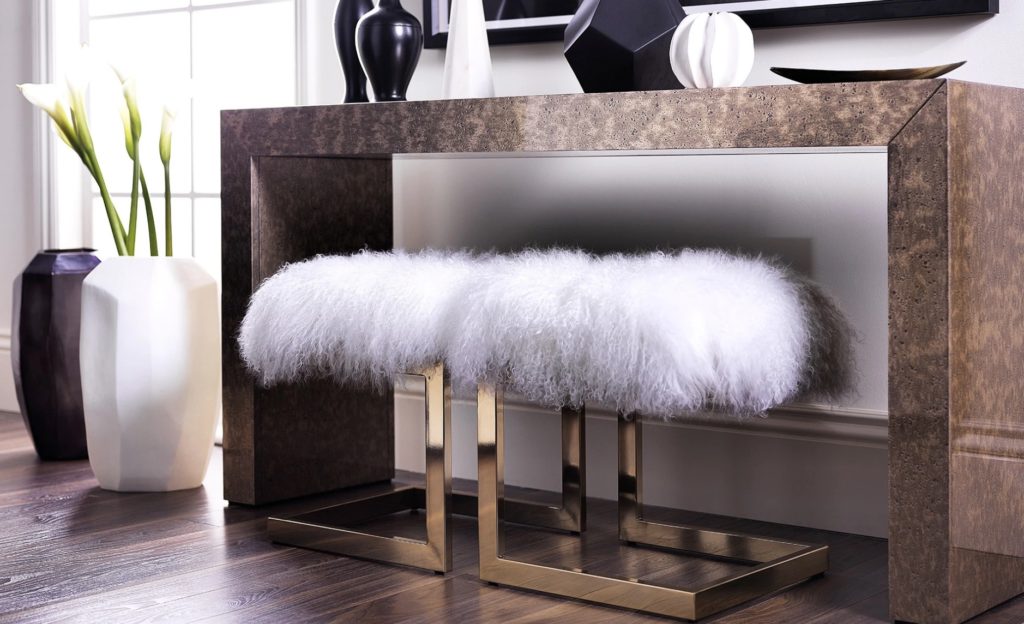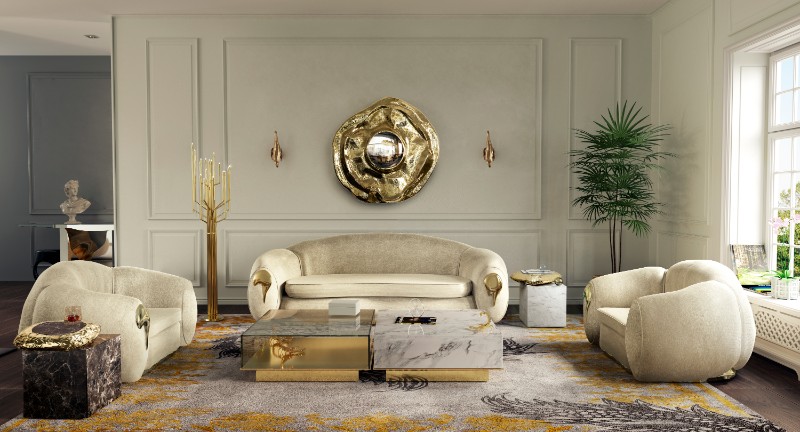Texture is a buzzword in interior design. It’s an essential part of any designer’s vocabulary, because a scheme without texture is a scheme that falls seriously short of the mark.

Adding texture to a room encompasses a great deal more than a fringed edged cushion here and a rough-sawn wood texture there. It is the precise art of blending the rough with the smooth and knowing how to create visual texture – the sort that isn’t tactile at all. The answer to what is texture and how to apply it to your interior awaits…
What is Texture in Interior Design?
Texture is, quite simply, the sensation produced by how things feel. Room texture translates in a similar way, but it also touches on how we perceive things to feel. For example, lighting, which is one of the greatest sources of texture in the home as its ambient glow can transform an entire space into one of incredible softness or conversely, one that’s hard and harsh.

Interior designers will also use texture to add what’s referred to as ‘visual weight’. In other words, how an object or section of the room is able to draw attention to itself. Contrasting textures is one way to make certain aspects stand out more than others; texture is a way to create accents.
6. Ways to Add Texture to Any Room in Your Home
Mixing texture in interior design is not purely a case of combining different materials and finishes. You should look to integrate different ways to add texture too. Here are six possibilities for bringing texture into your room’s design to get your creative juices flowing:
1. Layer Different Textures
Layering in interior design is key to producing a scheme that’s rich and full of depth. Try blending multiple different sources of texture so that you’re not relying on just fabric or furniture finishes.

Texture can come through in a whole host of ways, so don’t forget the impact that the following can have: matte versus glazed ornaments on a bookcase, book spines stacked on a side table aside a sculpted glass lamp base, a polished granite fireplace hearth with a tasseled rug in front of it, or even wall treatments and artwork that have the ability to make the walls feel multi-dimensional.
2. Use Contrasting Fabrics
Interesting textures aren't only pleasing to look at, but when you contrast them, they're great providers of balance too.
Is your color palette comprised of very similar shades? If so, you can interrupt the consistency by changing up the textures of any fabric in the room. Even if your deco has multiple shades, using contrasting fabrics proves that color and pattern aren't the only routes to achieving difference.

Remember to look beyond the obvious areas of fabric such as sofas and armchairs, and to not leave curtains, blinds and lampshades out of the equation. You can also evolve these textural contrasts as the seasons change. For example, a linen sofa might go from having cotton and silk cushions tin Summer to velvet and faux fur in winter.
3. Add Textured Furniture
Furniture texture is worthy of exploring, especially as you're most likely to come into physical contact with it. Imagine running your hand over a cool, smooth marble table, eating off a rustic oak dining table, opening the drawers of a green-lined chest and kicking back in an opulent velvet sofa.
4. Play with Textured Home Accessories
Vases, ornaments, sculptures and mirrors are accessories ripe for playing with texture. You could purposefully create an arrangement of objects wit alternating textures to really make a statement.

Careful to not add too many competing finishes into the room though, or the lack of link could produce a lack of direction. The objective isn't to fill your room with every different texture but to welcome an assortment of characters that are sympathetic to one another and unite to inject variation and intrigue in your space.
5. Decorate with Plants & Flowers
While you can reach out and touch plant life, this is an example of visual textile. Try to choose plants that link to other textures in the space, such as glossy verdant leaves of an oversized palm linking to lacquered, strong-lined furniture.

Similarly, ensure any vases match an existing texture in the room too, be it an ornament or lamp base.
6. Don't Forget Lighting
Lighting is another feature in the room with a dual texture aspect. The look and feel of the lamp itself plays a role in providing texture.
A high shine chrome floor lamp adds very different texture to a hammered bronze wall sconce, for example. But it is the rays of light themselves where texture takes on a more visual character.

Warm white light produces a far softer, more ambient glow than cool white light, which has a brighter, more contemporary beam that can cause a room's atmosphere to feel harsher.
Where you position these light sources also varies the texture- an unlit corner can blossom into a beckoning reading nook with the help of lighting texture. Choose the right temperature of bulb, and spreading the light sources at different levels throughout the room so you have wave upon wave of illuminated texture.
*extracted from luxdeco. Images courtesy of the internet.
